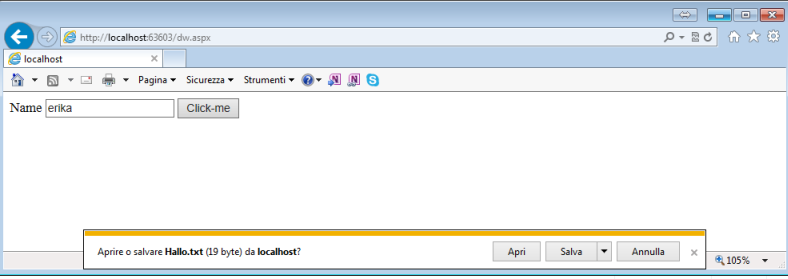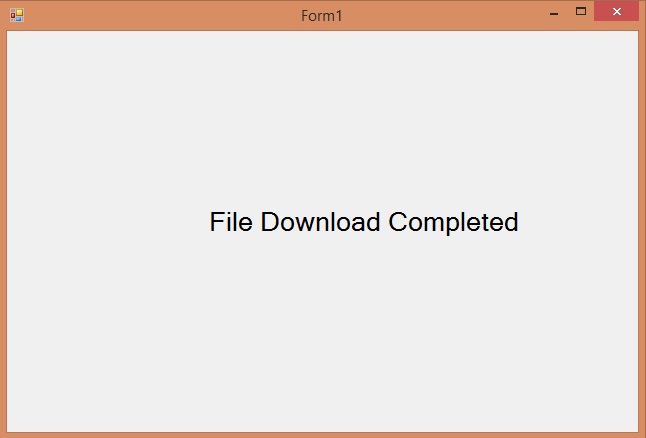
.Uploading a file over HTTP in.NET 11 November 2010 onYou program a client that needs to upload a file to the server. What are the options? You should probably look into System.Net namespace where you can either program at WebRequest/WebResponse level or make use of one of the convenient methods on the WebClient class.The 1st approach is described and WebClient provides a bunch methods with self-explaining names: UploadData, UploadFile, UploadString and UploadValues.
There are also asynchronous versions of the methods as well as overloads to send data over FTP.However,.NET doesn’t provide an out-of-the-box solution when you need to upload a file together with accompanying metadata. The metadata can be anything and is usually presented as name/value pairs, that is exactly what WebClient.UploadValues is supposed to do. And it does, but it doesn’t allow to send some binary array (a file) along with metadata.UploadValues can send a string-string dictionary of values. We can theoretically Base64-encode the file but that’s probably not what the other side expects.

Content type is set to application/x-www-form-urlencoded. What’s that mean? This code: NameValueCollection data = new NameValueCollection;data.Add('id', '10');data.Add('param', 'content');data.Add('file', 'A0BA');WebClient client = new WebClient;client.UploadValues('null, data);is going to produce the following request:Not really what we’re looking for. We want to send our stuff as multipart/form-data so that we could send dictionary values as well as binary content of a file in one request as just separate parts.It’s interesting to note that WebClient.UploadFile does set content type to multipart/form-data BUT:. it doesn'r properly format the request and. there is no way to piggyback any additional metadata:Let’s try to send a text file called “hello.txt” containing a single string “hello”: WebClient client = new WebClient;client.UploadFile('@'d:hello.txt');and here’s the request:Yep, the request is not properly formatted. You’re going to get away with it with IIS and.NET stack but it’s likely to fail on other servers like Tomcat, for example.

SolutionThe solution to both of these problems is found and there is a handy file uploader class written by Gregory Prentice.He explains why WebClient incorrectly constructs the request:There are basically three boundaries that need to be define: Begining or definition, Content, and Ending. The Begining boundary basically consists of a bytes array that defines to the receiving end what values to expect as a separator of the multipart data. Private storage premium opencart themes for windows 10. The Content boundary consists of the '-' string appended to the begining of the boundary and is used to separate the actual multipart data during the upload. The Ending boundary consists of the '-' appended to the end of the Content boundary. As an example the following represents each of these as present in the source code:BeginBoundary = 'ou812-8c405ee4e38917c';ContentBoundary = '-' + BeginBoundary;EndingBoundary = ContentBoundary + '-';Using the proposed uploader class called MultipartForm is as easy as: MultipartForm form =new MultipartForm('10');form.SetField('param', 'content');form.SendFile(@'d:hello.txt');See we upload a text file together with additional dictionary of parameters.
And here’s the request:By default it sets the content type of the uploaded file to text/xml but if you need to upload a binary file you can specify ‘binary’ for the FileContentType property.You can find a slightly brushed up version of MultipartForm class below.Hi, I'm Andrei, I'm a software developer building cloud enabled solutions. I'm mostly focused on Azure and.NET and I try to share my experience and knowledge here with you.
It can't, directly.If you trust the headers the web server sends back, you could use a different HTTP client (e.g. WebRequest or HttpClient) to make the entire response available rather than just the body. You can then look at the Content-Type header.Other than that, you'll need to look at the content itself. Various file types have 'magic numbers' which you could use to identify the file - they're typically at the start of the file, and if you only have a limited set of file types to look for, this may well be a viable approach. It won't be able to identify all file types though.As an example, the first four bytes of the image you've linked to are ff d8 ff e0. That reveals that actually it's not a jpeg image. As it happens, the server response also included a header of content-type: image/jpeg.
Asp.net Webclient File Free
You can try using API. Here is the snippet. It may help you. WebClient webClient = new WebClient;var result = webClient.DownloadData(new Uri('url'));IntPtr mimeout;int result2 = FindMimeFromData(IntPtr.Zero, 'sample', result, 4096, null, 0, out mimeout, 0);if (result2!= 0)throw Marshal.GetExceptionForHR(result2);string mime = Marshal.PtrToStringUni(mimeout);Marshal.FreeCoTaskMem(mimeout);Console.WriteLine(mime);And here is the API declaration. (Copied from ) DllImport('urlmon.dll', CharSet = CharSet.Unicode, ExactSpelling = true, SetLastError = false)static extern int FindMimeFromData(IntPtr pBC, MarshalAs(UnmanagedType.LPWStr) string pwzUrl, MarshalAs(UnmanagedType.LPArray, ArraySubType = UnmanagedType.I1, SizeParamIndex = 3)byte pBuffer, int cbSize, MarshalAs(UnmanagedType.LPWStr) string pwzMimeProposed, int dwMimeFlags, out IntPtr ppwzMimeOut, int dwReserved).